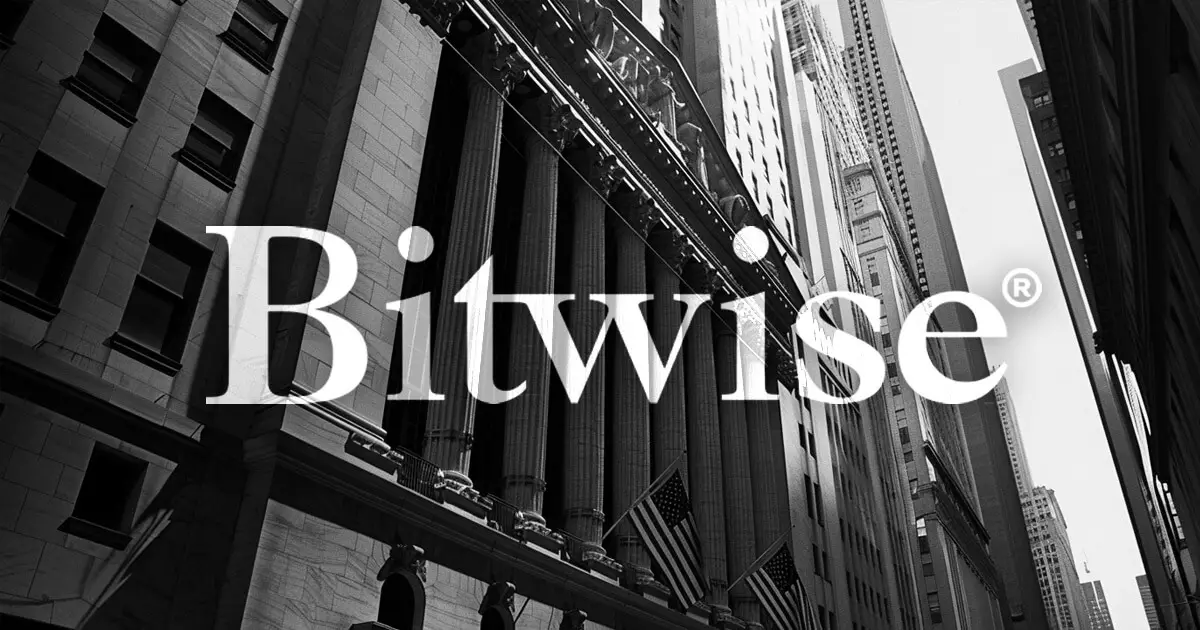As we navigate the ever-evolving landscape of digital assets, it’s essential to comprehend the foundation upon which this market stands—or teeters. Matt Hougan, chief investment officer at Bitwise, has raised alarms regarding the potential tumult awaiting the cryptocurrency sector. He argues that without crucial legislative frameworks from Congress, the burgeoning gains seen in mainstream digital asset investments could evade permanence. While many proponents of cryptocurrencies herald the positive changes initiated during the Trump administration, it is crucial to dissect whether these developments have truly fortified the digital asset landscape or merely provided a flimsy façade of stability.
The turbulence Hougan points to is not merely hypothetical but is rooted in real political dynamics that often plague the U.S. Congress. The specter of gridlock—particularly on issues accentuated by both financial and national security concerns—could lead to a notable loss of investor confidence. The risk is that a summer of inaction and political bickering could trigger a sharp downturn for crypto markets, which have been buoyed largely by speculative enthusiasm and transient sentiments rather than robust legal safeguards.
Regulatory Rhetoric or Real Reform?
One of Hougan’s noteworthy observations is that the advancements during the early days of the Biden administration were overwhelmingly reliant on executive actions. While these actions included establishing a U.S. Bitcoin Strategic Reserve and the classification of digital assets as a national priority, they lack the legislative backbone necessary for sustained influence. Policies enacted via executive authority often face potential reversals with each political turnover, leaving the entire landscape susceptible to abrupt changes that could undermine trust in an already volatile sector.
At this juncture, one might argue—has the crypto community become too reliant on transient administrative support instead of pursuing genuine regulatory reform? It stands to reason that the foundation of a market poised for long-term growth must involve coordination with lawmakers and an emphatic push for laws addressing stablecoins and the overarching structure of the digital asset market. These aren’t merely abstract concepts but the lifeblood of a burgeoning industry yearning for legitimacy.
The Shaky Ground of Upcoming Legislation
While Hougan remains optimistic, it is crucial to scrutinize the reality of legislative processes. The recent history of the Stablecoin GENIUS Act, which lost significant bipartisan support just as it seemed poised for further discussion, provides a sobering lens through which to view the current situation. The withdrawal of support from prominent Democratic senators underscores the fragility of bipartisan enthusiasm for cryptocurrency regulation, pivoting the narrative from potential affirmation to renewed skepticism.
These senators cited apprehensions surrounding national security and anti-money laundering as legitimate concerns warranting further scrutiny. Yet, does this not also highlight a glaring issue in the hasty legislation development process? If legislators continue to shy away from addressing these issues head-on, the potential for misunderstanding and flawed policies loom larger. Instead of adopting a measured approach aimed at enforcing regulatory frameworks, it seems the programmatic focus tends towards caution—a tendency that can ultimately stifle innovation.
The Implications for the Future of Digital Assets
The implications of inaction become most glaring when considering what a thriving digital asset market could mean for broader economic interests. A stablecoin framework that encourages transparency and backings, which Hougan championed, would not only provide legitimacy to digital assets but also create a bridge to traditional financial systems. Without it, will we once again find ourselves watching from the sidelines as the rest of the world advances? The potential benefits—such as boosting demand for U.S. government debt and reinforcing the dollar’s dominance in international payments—demand the attention of lawmakers who still seem hesitant.
For investors, the scenarios posed by potential legislative failure lead to discontent and uncertainty. Given that Hougan suggests Bitcoin could soar above $200,000 if the right policies are enacted, one must ask: what is preventing Congress from giving the green light? The reality is that, without tangible progress in Washington, the cryptocurrency market remains awash in insecurity—and this lack of confidence could precipitate a downward spiral as investors retreat from the marketplace.
Ultimately, if investors feel secure and clear legal frameworks are established, it stands to reason that the market could very well thrive in unprecedented ways. However, without proactive legislative action, the cryptocurrency sphere may well witness a summer of discontent—a reality challengingly at odds with the promise envisioned by its earliest advocates. Each passing day without meaningful legislation raises the stakes, causing a ripple effect that could be challenging to reverse.














